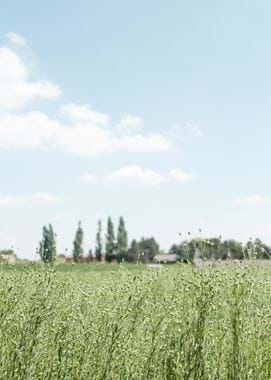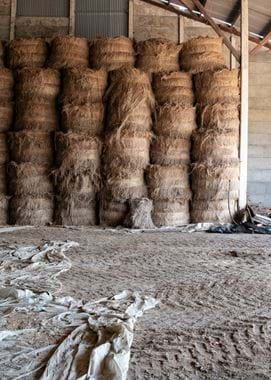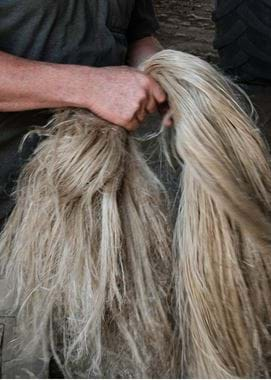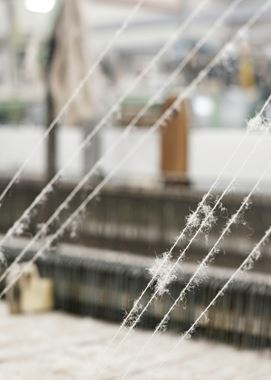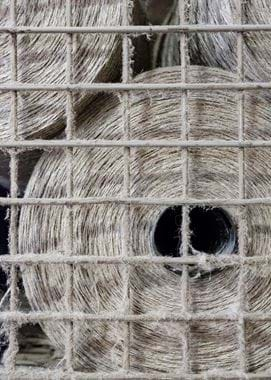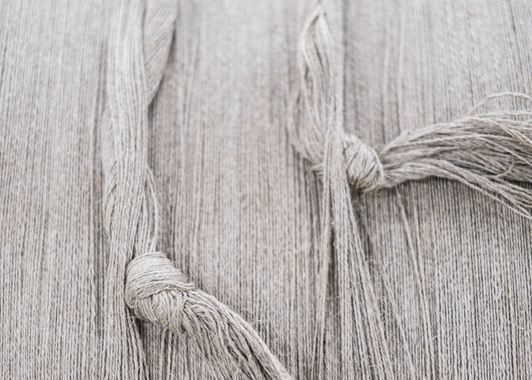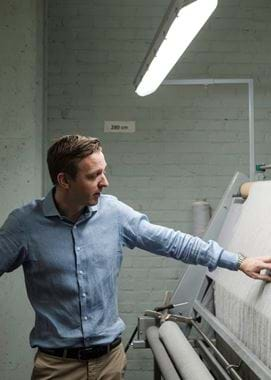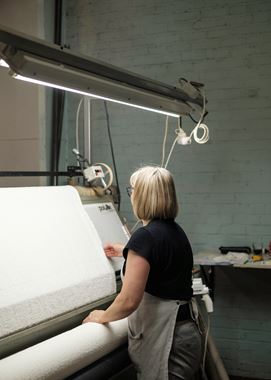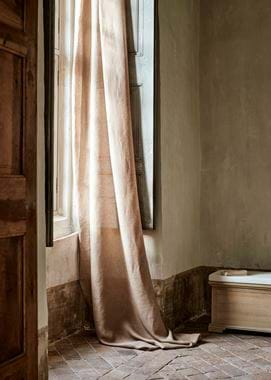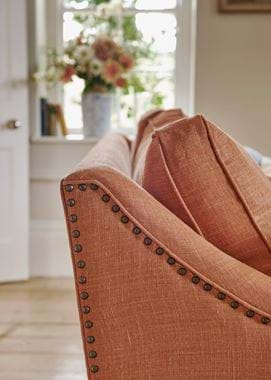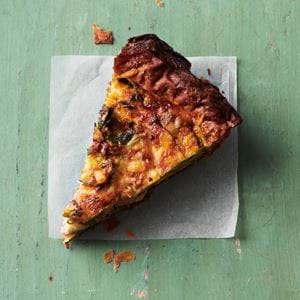In the making: Belgian linen
In the making: Belgian linen
Linen, the fabric. Flax, the fibre from which it’s woven. But how much do we think of its roots – historical and agricultural – when we invite that soft and breezy linen cushion onto our bed, that relaxed yet refined linen sofa into our sitting room, that generously sized linen napkin onto our laps at suppertime? Linen is a fabric full of detail, strength and intricacy, and so is its story. One that helps us to appreciate its presence in our homes with every meal, every sofa session and every bedtime.
A tale as old as time – almost. Linen’s story dates far back, with flax widely believed to be one of the most ancient agricultural crops in existence. In Switzerland, an archaeological dig unearthed charred remnants of linen threads, ropes and fishing nets from Neolithic times. Excavations in Spain found flax traces from the Bronze Age, and there’s evidence of flax being harvested for fibre as far back as 4,000 years B.C. Flax as food and flax as fibre are engrained in history. It’s proven that it can last the course.
Millennia later, flax is being grown the world over. Flax farming is well-documented and well-understood, and so cultivating as far as China and Kochi in India, and as close to home as…home (smaller flax crops are cultivated in Great Britain) is doable, and indeed done – though the yields are rarely as high-quality as those grown in Western Europe. France is in the lead when it comes to its number of flax crops, but it’s Belgium that’s long been regarded as the premium producer of the world’s finest flax fibres and linen fabric.
But what is it about Belgium linen that makes it so coveted, so of its own class? ‘Linen is in our blood. It’s not just our climate and our soil conditions that make us excellent flax producers, it’s that linen is part of our culture,’ explained Thomas Luys of Libeco, the world-renowned makers of the Belgian linen used for our Ida, Harry, Chloe and Finian textiles. ‘And there’s a real difference to note. Belgian linen means grown and woven in Belgium. It’s an actual trademark, and something we’re very protective of. Belgian flax is different though. That’s just a case of using the locally-grown fibre (which has the benefit of our cool climate, mineral-rich soils and small, interlacing rivers that provide an ideal amount of moisture for the crop here in the Flanders region). But it misses out on the other huge part of the production process. This linen won’t have been woven in Belgium to the strict standards of our linen specialists. It’s not made in the Belgian way.’ It’s Belgian born, but not bred.
Wherever the crop is grown, flax farmers need to follow similar steps, from sowing the seeds to pulling the stalks, and from loosening the flax fibres (known as ‘retting’) to harvesting the flax fibres (known as ‘scutching’). One of the more surprising elements in the production process comes after pulling – the flax isn’t brought in from the rain, scooped up from the soil, tucked away in a barn. Not yet anyway. Instead, the crop is purposefully left in the fields for up to six weeks to be able to tease out the flax fibre from the hardy ‘bask’ (other methods include soaking the flax fibres in a vat of warm water for several days, which produces a blonder yarn. Field-retting, on the other hand, gives the flax a greyer tone). The farmers leave nature to take its course rather than using chemicals or force. The alternation of sun, rain and dew creates microorganisms that dissolve the pectin in the stem of the plant. The farmers’ expertise is crucial here. When the flax is left on the field too long, it starts to rot and that harms the fibre’s strength.
Bask softened and on to scutching – the name given to the process of physically extracting the raw flax fibre from the stem. It’s entirely mechanical and uses no chemicals. It’s then combed, ready to be spun into yarn. ‘Any leftovers from the hardy flax bask are generally turned into chipboard or bedding for horses. Every part of the flax is used,’ Thomas pointed out.
‘Flax fibres undergo a very technical spinning process,’ he continued. ‘Fine yarns are wet-spun because it makes them glossier and smoother. Shorter fibres are dry-spun to give a coarser look. For us, it’s an art to understand what sort of fibre will produce the desired fabric and finish. You need to appreciate them on an individual basis.’ Then it’s time for weaving, where the yarn is first checked for strength and evenness of colour. Each weaver is trusted to control and know the idiosyncrasies of the particular loom. They work together. The loom will always identify if a thread is missing or broken, but it’s the weaver who locates it, mends it with what’s known as a ‘weaver’s knot’ and determines when the work can continue. But even under the watchful eye of the weaver, a final mending stage is always needed to repair faults; the word ‘fault’ not being an error on the weaver’s part. ‘Breaks on the loom aren’t something that can be avoided in weaving linen – they’re part and parcel of working with natural fibres and creating cloth. Our menders have eyes of lasers. Their role is to scour the lengths of linen for smaller breaks,’ Thomas told us. The key is knowing how to spy them quickly, tend to them gently, and nurture the cloth to beauty. ‘Any repairs are done by trained hands and are so invisible that they’re absorbed into the weave. There’s a misconception that slubs [the raised lines and bumps seen in most linen] are signs of broken fibres knotted back together, but slubs are in fact a natural part of the flax fibre’s construction.’ Like freckles, like dimples, like birth marks, they’re signs of development and individualism. They’re marks of its path to creation.
Now walk back into your bedroom and look at that cushion, hurry downstairs into the sitting room and lie back on that sofa, start supper early so that you can hold onto that napkin, and think – this is one of the most natural, long-lasting fibres in the world. Every part of the plant has been used. It’s hypoallergenic. It’s got next to no chemicals in it (or none whatsoever in the case of Libeco’s linens). It’s part of the earth. And me and my home are now part of its story. Long let us never say ‘the end’.

